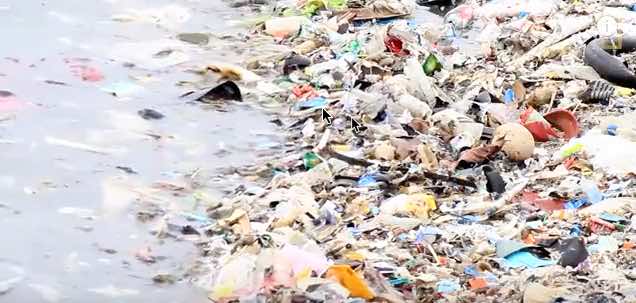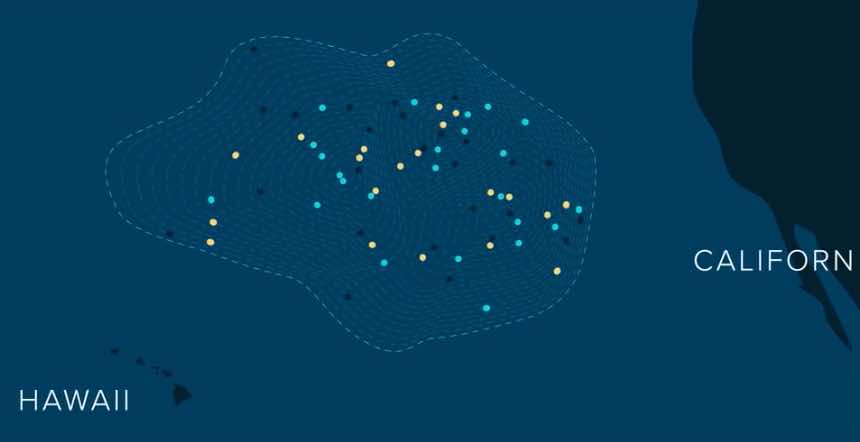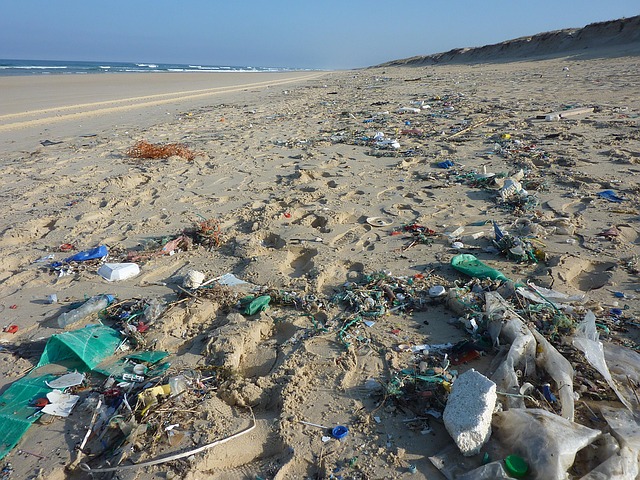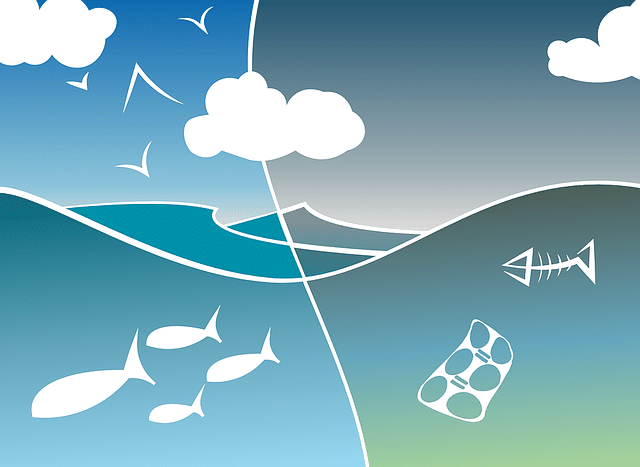Why the Sudden Interest in Ocean Plastic?
Over the last year, there has been a surge of interest in the problem of ocean plastic pollution. The media drumbeat began with the now-infamous turtle video, showing the removal of a plastic straw embedded in a turtles’ nostril. The obvious difficult removal and distress on this helpless creature is graphic and has motivated many to act.
The message is continued through National Geographic’s year-long “Planet or Plastic” series, and hit a new high with the BBC release of “Blue Planet ll.”


The first reports of the “plastic garbage patch” were brought back by Charles J. Moore in 1997. Moore has published a series of articles that brought attention to the “Great Pacific Garbage Patch”, an area of the Pacific Ocean strewn with floating plastic debris which is three times the size of Texas.
How Can We Cleanup ‘The Great Pacific Garbage Patch’
Since the first reports in 1997, we’ve learned that there are over 150 million tons of plastic in our oceans. Much of it comes from developing countries unable or uninterested in processing and recycling their plastic waste. These huge levels of plastic waste is ignored with little or no waste management systems in place to stem the tide.
The Ocean Cleanup a non-government engineering environmental organization develops technology to remove plastic pollution from our oceans. They have conducted two extensive studies of the largest plastic garbage patch located in the Northern Pacific Ocean. These surveys have shown how difficult a task cleaning up our oceans will be.

Plastic waste in our oceans is increasing by about 8 million tons each year. Rather than adopting systemic change, many in developed countries instead focus on eliminating single-use plastics such as straws. Even though these represent less than 1 percent of ocean plastic.
Even Businesses such as SodaStream are trying to do their part to protect our environment. SodaStream has deployed their first ocean sweeper to clean up plastic waste in the Caribbean Sea.
I Can See Plastic on the Beach
“I can’t see greenhouse gases, but I can see plastic on the beach.”

In July, PepsiCo committed $10 million to the “All In On Recycling” initiative to increase recycling rates in the United States and capture 7 billion containers over the next five years.
In September, Norway announced that it will spend $200 million over the next four years on waste prevention efforts, anticipating a series of commitments that will be revealed at this month’s Our Ocean conference, where last year $8 billion was pledged.
It’s about time we took this problem seriously.
No Other Environmental Topic has This Much Attention
In 20 years of watching environmental sustainability issues, I’ve never seen a topic or interest exponentially spike like this. Why do you think that is?
- Animals: From the video of the turtle with the straw stuck in its nose to the beached whale in Thailand with a stomach full of plastic, often people are more motivated by animal welfare than concern for the environment in general.
- Health: We are naturally more concerned about environmental issues that affect our health. This is known as the “in me, on me, around me” hierarchy in brand management circles. If fish are eating plastic and I eat fish, what does that do to my body? The science is still out, but perception doesn’t wait for science.
- Tangible: Unlike most environmental problems, plastic pollution is tangible. Therefore it is relatable. I can’t see greenhouse gases, but I can see plastic on the beach.
- Actionable: I make choices every day about plastic. It’s something I actually can do something about. Giving up straws is far easier than installing solar panels on your house.
- Social media: Awareness has been amplified by images and video on social media. When we see video of scuba divers swimming through plastic bags on our Facebook feeds, we take notice.
- Easy target for politicians: Regulators can earn quick wins by passing laws restricting plastic. Banning straws may not solve the plastic pollution problem. But at least it will get passed by the city council and “everyone gets a false sense that they did something to help the environment.”
News Reports Show Increased Investment
Recent news shows governments and corporations investing in solutions. In May, the Australian government set a target for 100-percent reusable, compostable or recyclable packaging by 2025.
Two months later, the Australian senate recommended a ban on all single-use plastics, including takeout containers, plastic-lined coffee cups, chip packages, and bags by 2023.
It Will Take More Action Than Facebook Shares
All of this increased attention is not without increased risk. If people feel that they’ve done their part by sharing a Facebook post endorsing a straw ban, will they take similar action in giving up food in convenient, non-recyclable multilaminate plastic pouches?
If politicians take a stand with single-use plastic regulation, will they also support policies that enable investment in the recycling infrastructure needed to actually make a difference?
“If people feel that they’ve done their part by sharing a Facebook post endorsing a straw ban, will they take similar action in giving up food in convenient plastic pouches?”
But I’ve never seen a crisis that demands public, nonprofit and private attention as quickly as this one. That’s the bad news. The good news is, I believe this problem is solvable. It won’t be easy, but it can be done if we can harness the momentum and put aside tendencies to divide.
We’re Wasting Time, Like We’re Wasting Plastic
Analysis shows that if we can build waste management and recycling systems in Indonesia, China, the Philippines, Vietnam and Thailand, we can reduce plastic waste by 45 percent. But here’s the catch, the cost of such an effort could be in the billions of dollars.
With governments and corporations committed, can we unlock the funds needed to begin working on that 45 percent? And, when combined with waste source reduction efforts and closed loop systems at scale, we can take care of the rest.
We’re wasting time just like we’re wasting plastic. Let’s stop doing both.
Calculate Your Carbon Footprint
If you would like to calculate your Carbon Footprint, follow the link to the free carbon footprint calculator of the United States Environmental Protection Agency.








